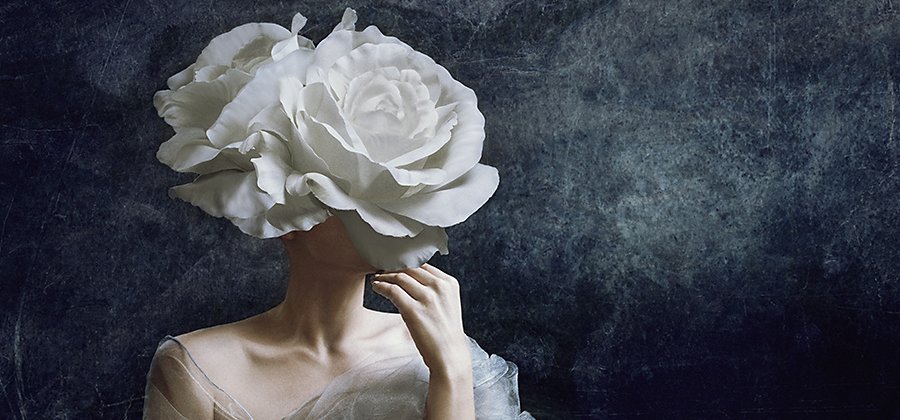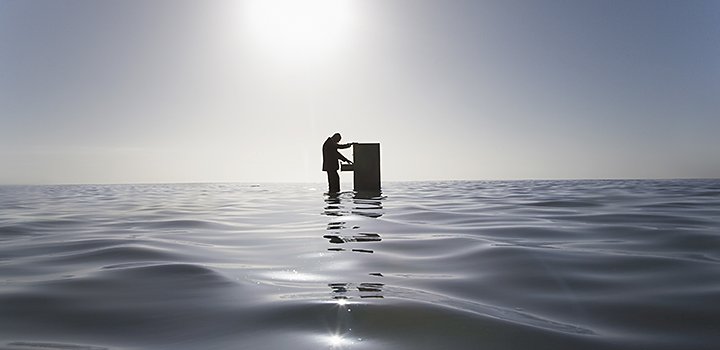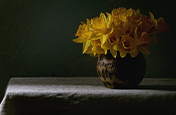Understanding the art of surreal photography.
Explore the world of surrealist photography and find out how to make your own dreamlike portraiture, provocative takes on everyday life, and sometimes funny images using surreal effects.

The strange and intriguing work of surreal photographers.
Surreal photography represents unconscious ideas, dreams, and emotions. Examples of surreal photography can be seen in the work of contemporary photographers like Brooke Shaden and Kyle Thompson. They work to create dreamlike tableaux that use modern methods to continue the surrealist tradition. Learn more about how you can pursue surreal photography and capture a look into the subconscious that isn’t constrained by reason or patterns.
What is surrealism?
Surrealism as a whole is an artistic movement that began in the early 1920s. In 1924, Andre Breton published the Manifesto of Surrealism, which defined the movement as “psychic automatism in its pure state … in the absence of any control exercised by reason, exempt from any aesthetic or moral concern.” Surrealism encompassed drama, literature, poetry, and paintings by well-known artists like Rene Magritte and Salvador Dali.


Photography has been part of surrealism since its first days. Figures like Hans Bellmer and Man Ray made surrealist photographs. Later, Philippe Halsman created Dali Atomicus using photographs to document a surrealist in action. Going beyond strict documentation wasn’t new for photography. “Even in the beginning days of photography,” says photographer Tina Tryforos, “photographers started to use their tools in ways that weren’t necessarily representational.” With surrealism, nonrepresentational photography had a movement it could thrive within.
Elements of surreal images.
Surrealism is distinct from abstraction. Both surrealism and abstraction were a break from art that was strictly representational, but they have different approaches. Abstraction uses colors, shapes, textures, and other elements to evoke feelings or ideas. Surrealism has recognizable images, but they’re often displayed in an unusual way. An evocative picture of cubes? Abstract. A building made entirely of human hands? Surreal. “Surrealism is always tied into reality in some way,” says Tryforos. “Even though it’s not realistic, it needs to be believable.”

“Surreal images tend to be dreamlike and tap into people’s unconscious,” says Tryforos. “They’re often made of different elements that are put together in unexpected ways.” Surreal images almost always contain recognizable elements from real life — human figures, clocks, apples — arranged in strange ways. The clocks might be melting, like in Dali’s Persistence of Memory, or an apple might be floating directly in front of a man’s face, like in Magritte’s The Son of Man.
Surrealism takes the real world and turns it into a dreamworld. “Things don’t always make sense from a logical standpoint,” says Tryforos. “Sometimes they can be disturbing or jarring or creepy, but they can also be playful and funny.” Surrealist images might make a kind of sense, but like abstract images, they are most concerned with expressiveness and making you feel something on a deep level you might not be able to explain.
Guidelines for surrealists.
First-generation surrealists like Dali or Breton would have likely resisted the idea of rules for surrealism, but like any genre, it does have conventions, guidelines, and things to keep in mind if you want your image to be successful.

Having purpose, agency, and expressiveness will go a long way to creating a disorienting or unusual image. “I like to make things that seem impossible, but are clearly possible because you’re seeing me do it,” says photographer and designer John Spannos. “It comes down to meticulously planning out your shots and knowing exactly what pieces you’re going to need to build that final piece.”
This also applies to types of surrealist art that incorporate randomness. Practices like automatic writing or photomontage — with hastily chosen images — are pillars of surrealist practice, but they still incorporate a human element, in that they often purport to reflect the unconscious mind. “I’m using chance in my process, but also controlling it,” says Tryforos.
“It’s okay to break the rules,” says Spannos, “but you need to break the rules strategically. It can’t be on accident. Break the rules on purpose.”
Surrealism has always incorporated more photo editing than other genres. Photomontage and the juxtaposition of dissonant or disturbing images are hallmarks of surrealism, but even when creating fantastic images, the result still needs to look believable, if not realistic. “If you can see the edit,” says Spannos, “you didn’t spend enough time with the edit. Learn your software. Learn how Photoshop works and don’t be afraid of it.”
Editing errors can detract from the overall emotional impact that a surrealist image can have. A small slip can mean your viewer is focusing on something technical, rather than something emotional or impactful. “The viewer will know there’s something wrong, even if they don’t know what’s wrong,” says Spannos. When combining or altering photos, be mindful of shadows, light, color of light, and other factors. Make sure lights and light temperature match where they need to match. The better job you do on the technical side, the more your viewer will believe in the strangeness you create.
Breaking into surrealist photography.
Improving as a surrealist means drawing on your own reserves of weirdness, being comfortable with expressing your unconscious, and being a bit strange. But, like any other genre, it also rewards practice, study, and professional experience. “You’ll never get better if you think everything you do is already perfect,” says Spannos. “You need to be open to critique.”

Reaching out to other surrealist photographers for that critique can prove helpful. “If there are photographers you like,” says Spannos, “just reach out to them.”
Likewise, knowing about the surrealist tradition can inform and improve your own work. “Understand the history, and understand the people who’ve used surrealism,” says Tryforos, “both from a hundred years ago and from last week.” Through research, interacting with other photographers, and practice, you can be part of a century-old tradition, and continue to use your camera to delve into the world of the unconscious.
Contributors
You might also be interested in…
Create a double exposure effect.
Combine two of your photos for one head-turning look.
The art of still life photography
Improve your composition skills by learning the art of still life photography.
Find your truth in fine art photography.
Follow your passions and explore the conceptual layers of creating artistic photos.
Combine images to create exciting visuals.
See how you can combine images in photoshop to create layouts and composite images.



